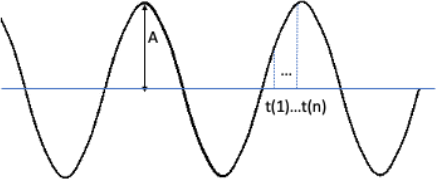Engg7302 Advanced Computational Techniques in Engineering Assignment 1: Optimisation
Hello, dear friend, you can consult us at any time if you have any questions, add WeChat: daixieit
Engg7302 Advanced Computational Techniques in Engineering
Assignment 1: Optimisation
Due date: 22 Sep 23 15:00
Where to submit: Submit the assignment report via the Blackboard Turnitin submission system.
Instruction:
For this assignment, you must carry out the process of attempting to solve different optimisation problems. For each question, you are required to report your results in detail. It should include your best solution and its corresponding solution procedures. If you are asked to solve those sub-questions using MATLAB, their MATLAB source code with detailed comments is required.
Marks will be awarded based on how well your submission addresses the above points.
This assignment is worth 20% of the total marks for the course.
Question 1 (40 marks)
An elliptical tract of land is situated within the UQ campus, and you are required to build a rectangular pond within this area.

Figure 1. The ellipse and its inner rectangle. The length of the major axis is 2a=20, and the length of the minor axis is 2b= 12. .
Consider utilising optimization methods to determine the dimensions of the rectangle (length and width) in a manner that maximises its enclosed area.
(a) Construct a one-dimensional optimisation model and solve it using the Golden Section Search method. Solution details and MATLAB codes are required. (20 marks)
(b) Construct a two-dimensional optimisation model and solve it using the Lagrange multiplier method. Solution details are required (no MATLAB code required. (20 marks)
Question 2 (60 marks)

Figure 2 The Sin wave.
Consider a sin wave denoted by F(t) = Asin(wt + θ), depicted in Figure 1. The wave has a frequency of f=2000Hz, and w = 2πf. You are asked to determine the amplitude A and phase θ based on the data recorded at N specific time instances t(1),...t(N) (refer to Table 1).
Table 1
|
Time instants (sec) |
Recorded data at each time instant |
|
5.010000e-08 |
-0.706660742882478709603333300037775188684463500976562500000 |
|
5.020000e-08 |
-0.706659646227875248847283273789798840880393981933593750000 |
|
5.030000e-08 |
-0.706658953831649672139292306383140385150909423828125000000 |
|
5.040000e-08 |
-0.706658046948851814583747454889817163348197937011718750000 |
|
5.050000e-08 |
-0.706657500337526500722162836609641090035438537597656250000 |
|
5.060000e-08 |
-0.706656779024575243397521262522786855697631835937500000000 |
|
5.070000e-08 |
-0.706655608523821032740386272053001448512077331542968750000 |
|
5.080000e-08 |
-0.706655021153845264159087946609361097216606140136718750000 |
|
5.090000e-08 |
-0.706653508699094934364381970226531848311424255371093750000 |
|
5.100000e-08 |
-0.706652799008767318333923412865260615944862365722656250000 |
1) For equation fitting, we suppose the desired criterion is to minimise the largest absolute deviation between the recorded data and its corresponding predictions.
Please develop a corresponding Linear Programming (LP) model and solve the formed LP problem using the MATLAB function-linprog(). To describe the constructed LP model, you must provide solutions details and write down the tabular form. (40 marks)
2) Suppose the desired criteria for equation fitting is that the fitted data should demonstrate the least sum of the squared deviations between the recorded data and its corresponding predictions. You are then asked to solve the formed least square (LS) problem.
Set up the linear system equation (Ax=B) of the LS problem and solve it using the Normal equations approach. (20 marks)
Hint:
To solve both questions, you need to develop a linear model.
Ref:
This math question comes from the following paper: ref.pdf
2023-09-21